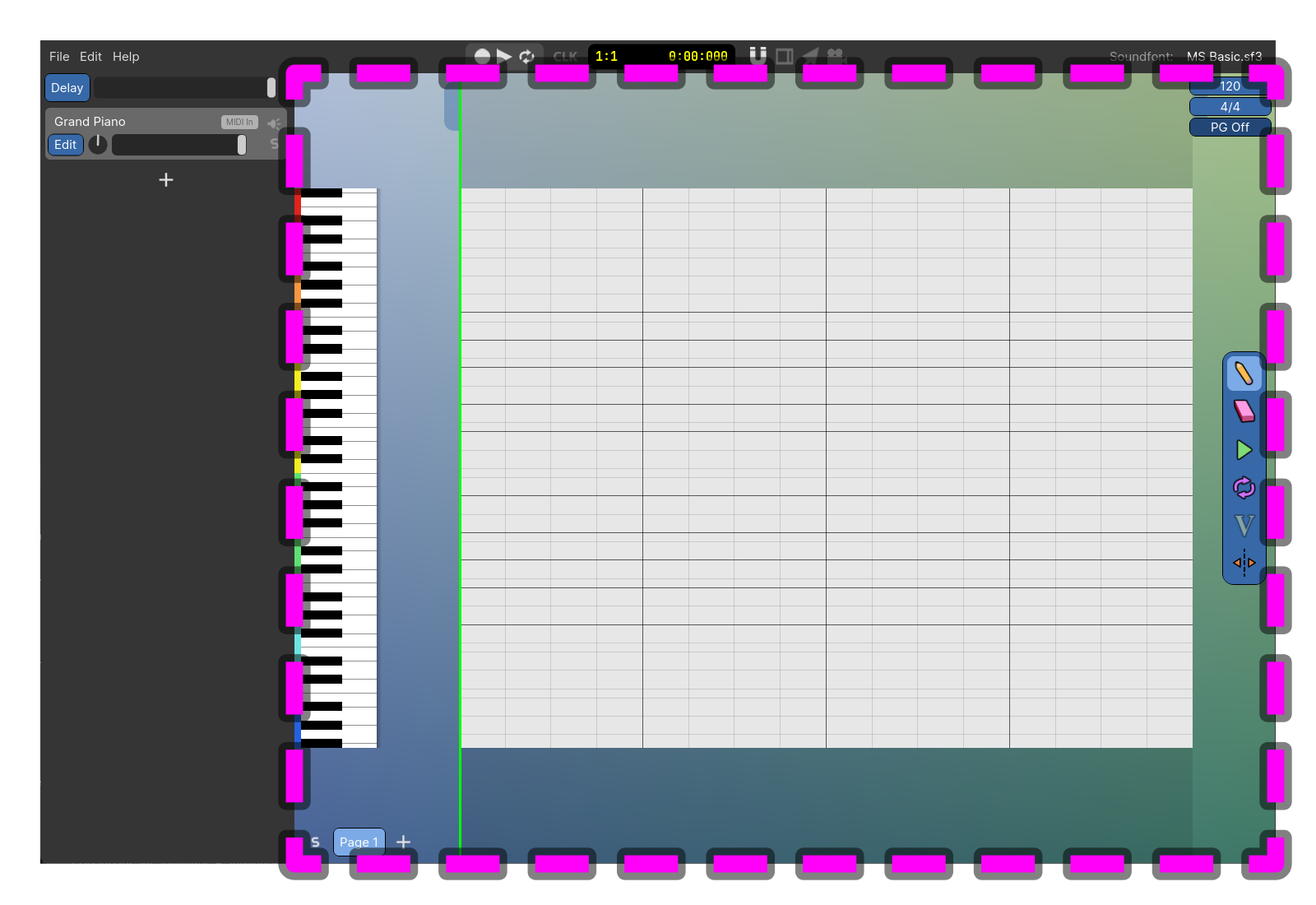Drumclone allows extracting and modifying high-quality single drum sounds from complex audio sources like songs, samples, or any recording with perceptible percussive elements. Drumclone comes with models* to precisely isolate and resynthesize drum sounds, which allows a fast iterative workflow thanks to its sub-second processing times and drag and drop UI. While it works for isolation, drumclone's main focus is it's sound-design capabilities. Being able to imitate one-shot percussive noises and tweak their attack, transient, noise component, etc, down to the sample-level.
Real-world usage
The utilization of pre-made sounds or song samples is a prevalent practice across various music production genres. Drum samples, in particular, serve as essential components, often forming the structural foundation of numerous compositions. Utilizing drumclone, these high-quality drum sounds can be extracted from existing recordings and subsequently modified without any degradation in sound quality.
Rare DSP DrumСlone (Drum Re-synthesizer) v0.6.2 VST3 WiN MAC [FREE] screenshot
This methodology can effectively isolate a drum sound and mutate it from pure sine-like percussion, to harmonically rich and distorted drum sounds, while keeping the processing fast enough to visualize the results it in real-time.
Unlike traditional extraction methods, which tend to degrade the quality of the sounds with unnatural filtering artifacts and output static audio samples, resynthesis can model the original timbral characteristics of the drums and allows creative flexibility by tuning the underlying formula with simple user-facing controls.
Technology
1. Analysis
Processing starts with time and frequency domain analysis of the input. Features are extracted and modeled in the time domain to aid in detecting events and components corresponding to percussive signals in the spectral domain.
2. Extraction
Components are isolated from the input using different soft spectral masks tailored to the component type, built around detected events and user-specified envelopes.
3. Resynthesis
Once these audio layers are reconstructed from the spectral domain, dynamics and stereo processing are applied to refine the output.
These filtered percussive component layers serve as the input for the resynthesis process. Each signal is matched using a synthesis technique that accurately represents their tonal and amplitude characteristics.
4. Mix + post-processing
This is achieved by using different polyphonic or monophonic oscillators (sine and band-passed noise) and generating modulation envelopes that closely resemble the input.
Following resynthesis, the layers are mixed down into a cohesive stereo track. Straightforward cross-fading and summing with predefined curves are employed in the mix.
Finally, stereo and dynamics processing are applied to the output track to achieve a more natural sound and controlled audio levels.
Capabilities:
One-shot percussion isolation and resynthesis.
Flexible transient and body sculpting with tone and noise controls.
Fine-tuning with sample-level resolution.
Synthesis models to avoid typical filtering isolation artifacts.
Extremely clear drum sound output for applying further processing chains.
Real-time visualization of every change in the waveform.
Fast drag-and-drop workflow.
Fully offline, no cloud or servers involved.
Sub-second processing times on common hardware.
Multi-segment envelope editors to accurately shape the underlying model.
Low-profile vector UI with data visualization and inline controls.
System requirements
WINDOWS:
OS version:
Windows 7/8/10/11 64 bit
Plugin formats:
VST3
MAC:
CPU Architecture:
Compatible with both Intel and M-based (ARM) CPUs
OS version:
MacOS 10 and higher
Plugin formats:
VST3
Installation
macOS VST3:
Extract the folder from the .zip file.
Run the REQUIRED_SETUP command to avoid Gatekeeper issues when running the plugin for the first time. (Might require Right-click > Open if unknown developer message appears¹)
Copy the .vst3 file to your VST3 folder. By default it should be in your user's /Library/Audio/Plug-Ins/VST3 directory.
You can navigate easily to this folder by using Finder's Go menu and the Go to folder option.
Some DAWs or VST hosts might require a manual re-scan of the vst3 folder for the plugin to appear.
¹ This is due to RARE ⁄ DSP not being part of the Apple Developer Program.
Windows VST3:
Extract the folder from the .zip file.
Copy the extracted .vst3 directory¹ to your VST3 folder. By default it should be C:\Program Files\Common Files\VST3
Some DAWs or VST hosts might require a manual re-scan of the vst3 folder for the plugin to appear.
¹ The .vst3 'folder' file-type is part of the newest VST3 bundle format.
DOWNLOAD MAC:
https://usersdrive.com/d3zsbysdhbyf.html
DOWNLOAD WINDOWS:
https://usersdrive.com/s5186rdzto1b.html


